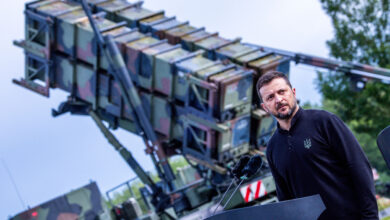Raytheon to Develop Wireless Airborne Power-Generating System for DARPA
The Defense Advanced Research Projects Agency (DARPA) has awarded Raytheon a $10-million contract to design and produce a wireless airborne power-generating system for contested environments.
The award supports the agency’s ongoing Persistent Optical Wireless Energy Relay (POWER) program seeking modernized energy distribution platforms for warfighters via beaming technologies.
Under the two-year contract, Raytheon will design an airborne solution producing “webs” that collect, transmit, and redirect optical beams.
These laser webs will carry energy from ground sources to high altitudes to sustain long-range and precision power distribution for sensors, effectors, and unmanned systems.
According to Raytheon, the resulting POWER energy solution will decrease the warfighters’ dependence on traditional fuel, corresponding delivery, and storage.

“Energy is essential in the modern battlespace, and it is critical to achieving military objectives,” Raytheon Advanced Technology President Colin Whelan stated.
“When operating in contested environments, energy may not always be available or abundant, making the need to generate, store and re-distribute it vital.”
“This technology seeks to enable our military to generate power where it is safe and efficient to do so and easily distribute it to other platforms.”
DARPA’s POWER Program
The US began accepting proposals for the POWER program in October 2022. Following the design and development phase, Raytheon will be tasked with demonstrating the system in flight.
DARPA said that this wireless power transfer platform technology can upgrade military assets with “unlimited range and endurance,” which is not yet possible with existing energy solutions.
Once completed, the beaming method will work similarly to the physics of wireless communication, with the continuous flow of energy enhancing the decision-making timelines of soldiers on the battlefield.
“We believe the next energy revolution will be enabled by the wireless energy web,” DARPA Tactical Technology Office POWER Program Manager Col. Paul Calhoun explained during the effort’s launch.
“It will dramatically compress transport timelines and resiliently provide distributed energy to consumers in air, on land, on the sea, undersea, and in space.”












